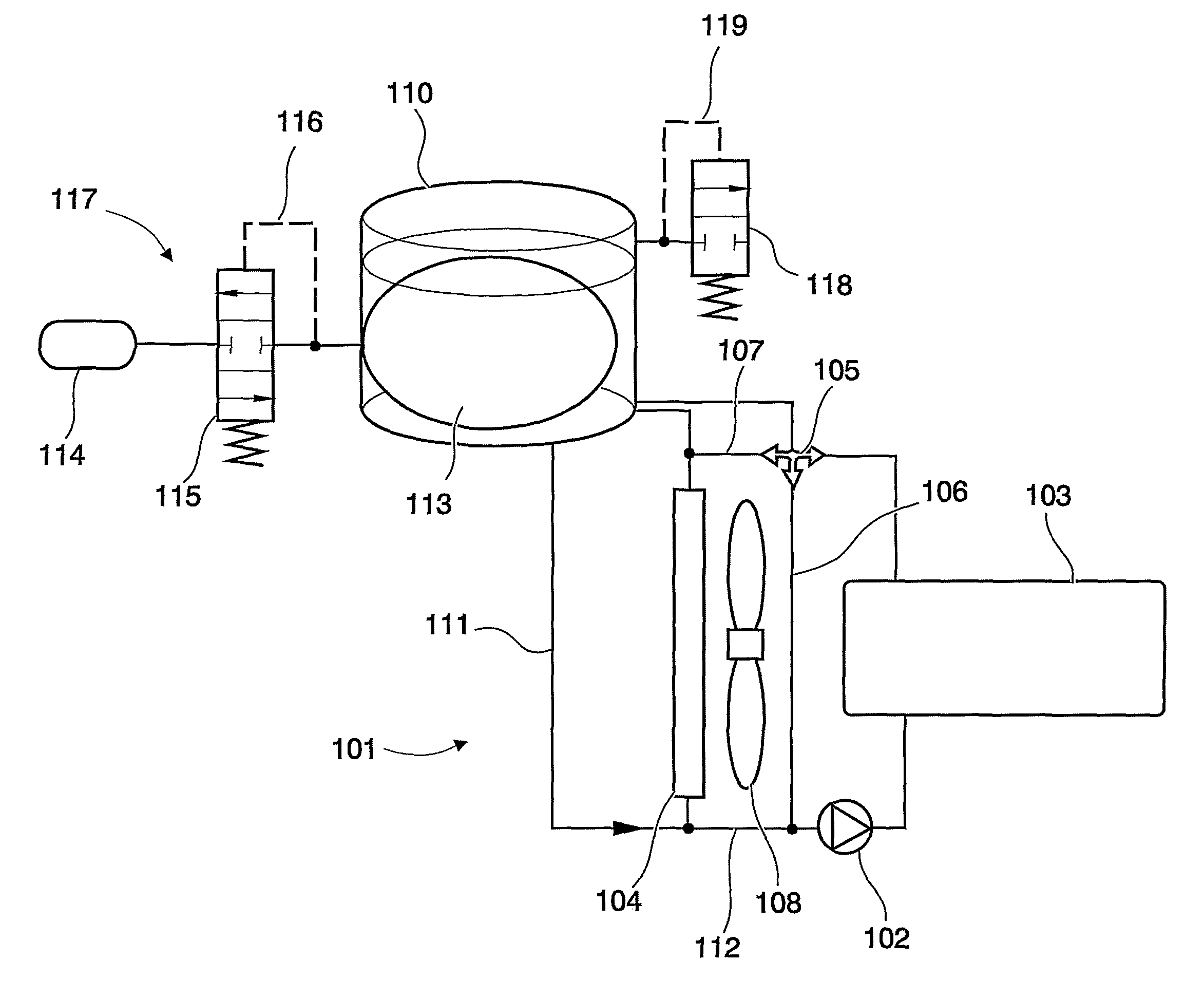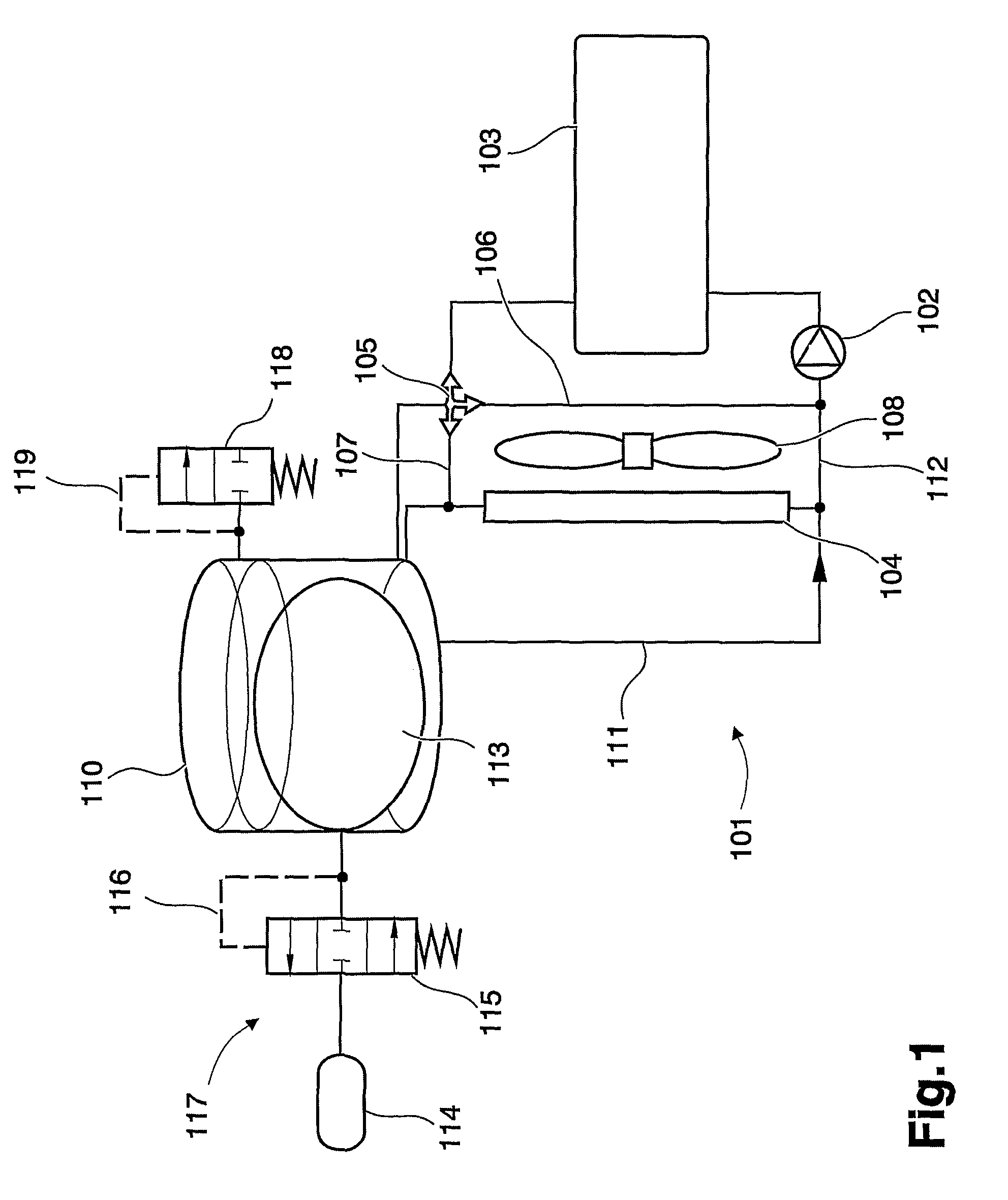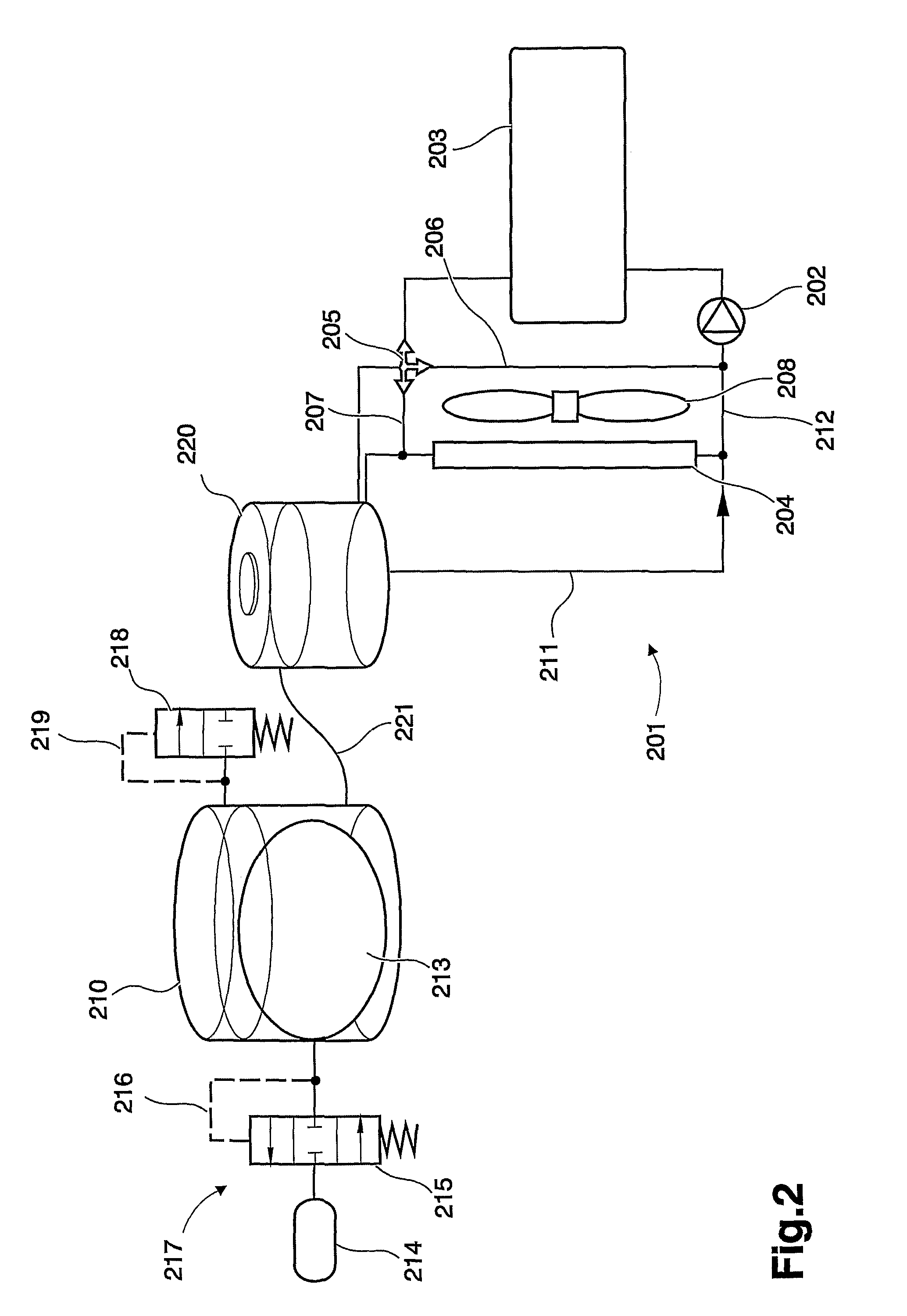Coolant system
a cooling system and cooling chamber technology, applied in the direction of liquid cooling, coolant flow control, control devices of cooling apparatus, etc., can solve the problems of undesired release of air and coolant to the ambient atmosphere, etc., to avoid cavitation in the pump, prevent cavitation, and quickly build up pressure
- Summary
- Abstract
- Description
- Claims
- Application Information
AI Technical Summary
Benefits of technology
Problems solved by technology
Method used
Image
Examples
first embodiment
[0037]FIG. 1 shows a pressurized cooling system according to the invention.
[0038]The engine cooling system comprises a cooling circuit 101 with a coolant pump 102 for supplying an engine 103 with a coolant and for circulating the coolant in the cooling circuit 101. A radiator 104 is provided for cooling said coolant downstream of the engine 103. In the cooling circuit, the pump 102 will supply coolant to the engine 103, wherein the coolant is heated. Heated coolant will pass through a thermostat 105 which, depending on the temperature of the coolant, will direct the coolant directly back to the pump 102 through a first conduit 106, or indirectly via the radiator 104 through a second conduit 107. The radiator 104 is arranged to reduce the temperature of the coolant to a desired level, which temperature reduction is assisted by a cooling fan 108. The cooling system can also be arranged to cool a charge air cooler (not shown) located adjacent the radiator 104. An expansion tank 110 is ...
second embodiment
[0048]The expansion tank 210 is further provided with a safety valve 218. The safety valve 218 is set to release a relatively high excess pressure to the atmosphere. The safety valve 28 release pressure is preferably set at a level that will maintain the cooling system in a closed state during all normal operating conditions. The safety valve 218 should only open when there is a risk of damaging components in the cooling system. The safety valve 218 is a pressure controlled 2-way valve. The safety valve 218 is connected to an upper section of the expansion tank and is normally maintained in a closed position, as shown in FIG. 2. At a predetermined set pressure in a pilot conduit 219 acting on one end of the safety valve 218, the safety valve is opened to release excess pressure from the expansion tank 210. FIG. 3 shows a pressurized cooling system according to the invention. As in the embodiment of FIG. 2, the engine cooling system comprises a cooling circuit 301 with a coolant pump...
PUM
 Login to View More
Login to View More Abstract
Description
Claims
Application Information
 Login to View More
Login to View More - R&D
- Intellectual Property
- Life Sciences
- Materials
- Tech Scout
- Unparalleled Data Quality
- Higher Quality Content
- 60% Fewer Hallucinations
Browse by: Latest US Patents, China's latest patents, Technical Efficacy Thesaurus, Application Domain, Technology Topic, Popular Technical Reports.
© 2025 PatSnap. All rights reserved.Legal|Privacy policy|Modern Slavery Act Transparency Statement|Sitemap|About US| Contact US: help@patsnap.com



